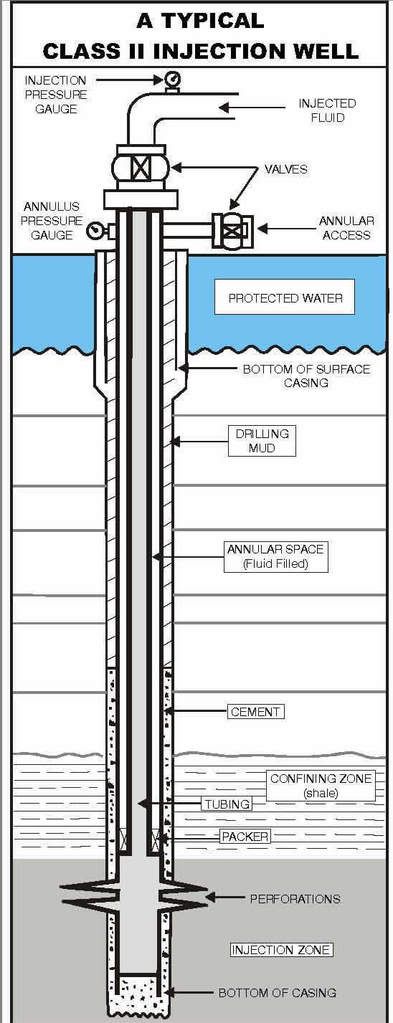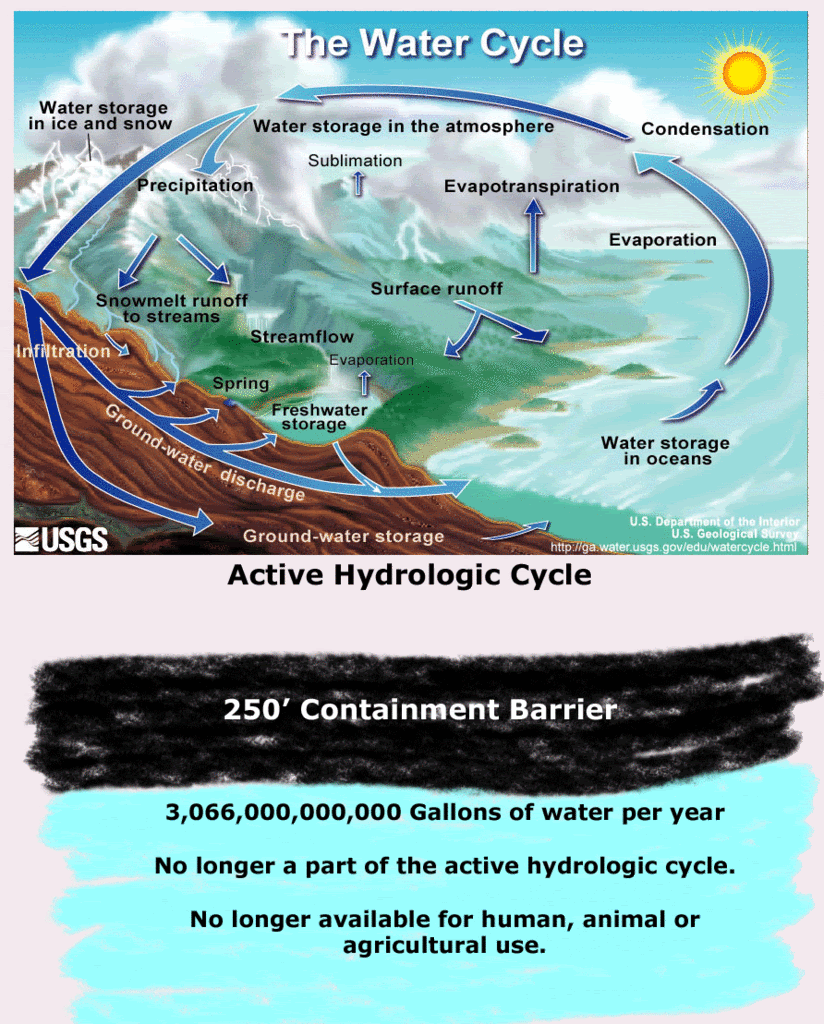When the well is dry we learn the worth of water. ~~Benjamin Franklin
[Learning the worth of water]
The Nobel Prize-winning Intergovernmental Panel on Climate Change’s fourth international assessment released earlier this year predicted that “drought-affected areas will likely increase”
In our quest to beat the hydrocarbon energy dead horse we are abusing our environment and depleting the natural resource that we cannot live without, water. Each year approximately 3,066,000,000,000 gallons of water is permanently removed from our hydrologic cycle causing a deficit in our available water budget.
That water is polluted then injected approx. 1.5 miles into the earth in a [saltwater disposal well/injection well] under a 250′ containment formation where it stays PERMANENTLY. That water is not recycled like your bath water. (list of pollutants)
“The purpose of injecting waste water produced during oil and gas exploration and production operations is to permanently dispose of the material by injecting it into deep porous formations well below any fresh or useable water that contain unusable fluid.”
~ Doug Johnson, PE, Manager for Injection – Storage Permits and Support, Texas Railroad Commission.
The most frequent objection presented by those in the oil and gas industry is to point at golf courses for using water to keep grass green or people with swimming pools and I agree that we need to look at these examples to see where we can reduce water use. However, in these examples the water is still available for evaporation and is still a part of the active hydrologic cycle. The water used by the oil and gas industry is not available for evaporation and is permanently removed from our active hydrologic cycle.
“Disposing used water into deep injection wells essentially removes it from the active hydrologic cycle.”
Dr. Paul F. Hudak, author of Principles of Hydrogeology

Oil and gas operators are exempt from monitoring water usage so the figures we have are best guess estimations based on information that is voluntarily supplied by the operators themselves.
TEXAS
400 Million gallons per day of waste water is produced by the oil and gas industry in Texas alone. (1)
NORTH TEXAS
According to the U.S. Geological Survey, water used to produce Barnett Shale gas in Denton County averages 2,226 gallons per million cubic feet of gas. Overall, the Barnett Shale average is 1,638 gallons per million cubic feet of gas. Some estimates say that the Barnett Shale has 30 trillion cubic feet of gas. I don’t have the math skills to accurately calculate the water usage, but I get somewhere around 491,400,000,000 gallons of water.
491,400,000,000 gal. water = 1,508,051 acre-feet
Volume of Local N. TX lakes in acre-feet:
194,000 – Lake Lewisville
181,100 – Lake Grapevine
520,400 – Ray Roberts
366,236 – Lake Bridgeport
724,700 – Possum Kingdom Lake
490,000 – Lake Ray Hubbard
If we drained all the water from Ray Roberts and Possum Kingdom Lakes it still wouldn’t be enough to produce the gas in the Barnett Shale. I’ve seen it written that there is enough gas in the Barnett Shale to supply the entire United States for one year. One whole year…
WORLDWIDE
200 million barrels of produced water worldwide each day (Burnett 2007) (1).
200,000,000 bbl/day x 365 = 73,000,000,000 bbl/yr.
There are 42 gallons in a barrel.
73,000,000,000 bbl/yr. x 42 = 3,066,000,000,000 gal/yr
This reckless practice takes place all over the planet! Where are the studies showing the long-term effects of permanently removing water from our hydrologic water budget? What will our children and their children drink?
I remember the margarine commercial from when I was a child, “It’s not nice to fool Mother Nature.” It’s funny how things from our childhood stick with us. As a child I thought about that commercial a great deal and about the many ways man fools Mother Nature. She was angry and fought back over margarine. What might she do about this?
It’s not nice to fool Mother Nature.
Stop beating the hydrocarbon energy dead horse before it beats us. ~TXsharon
(1) from a study by David B. Burnett (Harold Vance Department of Petroleum Engineering, Texas A&M and Director of Technology Global Petroleum Research Institute. ).
Injection well image from [Texas Railroad Commission]
Water cycle public domain image from U.S. Geological Survey and altered by me
Crossposted from Bluedaze





